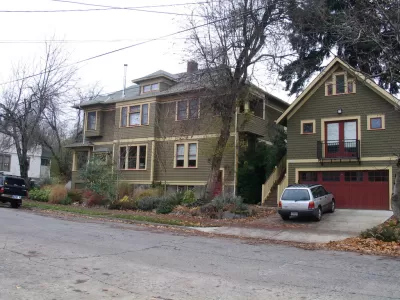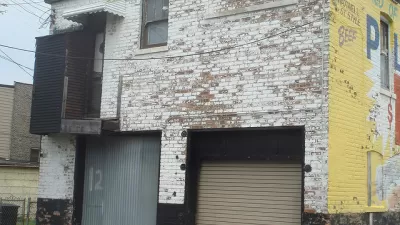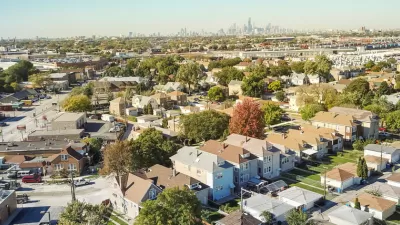Architect Larry Kearns argues that re-legalizing accessory dwelling units in Chicago could do a lot to promote affordable housing and economic diversity.

In Chicago, it's currently illegal to build new accessory dwelling units (ADUs or coach houses). Architect Larry Kearns argues that changing this would have several positive effects, including: allowing for the kind of diverse developments that allow people of different income levels to live in the same neighborhoods, and to allow for aging in place for families that want to live near each other, but maintain their own spaces.
"Larry and the architecture firm that bears his name had submitted that document as a tiny house proposal for a “request for ideas” from Mayor Emanuel’s office," Steven Vance writes for Chicago Cityscape. While the mayor's office did not act on that plan, Kearns has not given up on the idea.
In his report on coach houses, Kearns writes, "Resilient neighborhoods, by definition, aren’t dominated by uniformly sized dwellings because residents need choices to upsize and downsize throughout their life." Kearns makes the argument that ADUs could be one good way to create that resiliency and create more types of housing to accommodate a greater variety of needs.
FULL STORY: What a local architecture firm thinks Chicago coach houses could look like

Planetizen Federal Action Tracker
A weekly monitor of how Trump’s orders and actions are impacting planners and planning in America.

Chicago’s Ghost Rails
Just beneath the surface of the modern city lie the remnants of its expansive early 20th-century streetcar system.

San Antonio and Austin are Fusing Into one Massive Megaregion
The region spanning the two central Texas cities is growing fast, posing challenges for local infrastructure and water supplies.

Since Zion's Shuttles Went Electric “The Smog is Gone”
Visitors to Zion National Park can enjoy the canyon via the nation’s first fully electric park shuttle system.

Trump Distributing DOT Safety Funds at 1/10 Rate of Biden
Funds for Safe Streets and other transportation safety and equity programs are being held up by administrative reviews and conflicts with the Trump administration’s priorities.

German Cities Subsidize Taxis for Women Amid Wave of Violence
Free or low-cost taxi rides can help women navigate cities more safely, but critics say the programs don't address the root causes of violence against women.
Urban Design for Planners 1: Software Tools
This six-course series explores essential urban design concepts using open source software and equips planners with the tools they need to participate fully in the urban design process.
Planning for Universal Design
Learn the tools for implementing Universal Design in planning regulations.
planning NEXT
Appalachian Highlands Housing Partners
Mpact (founded as Rail~Volution)
City of Camden Redevelopment Agency
City of Astoria
City of Portland
City of Laramie




























